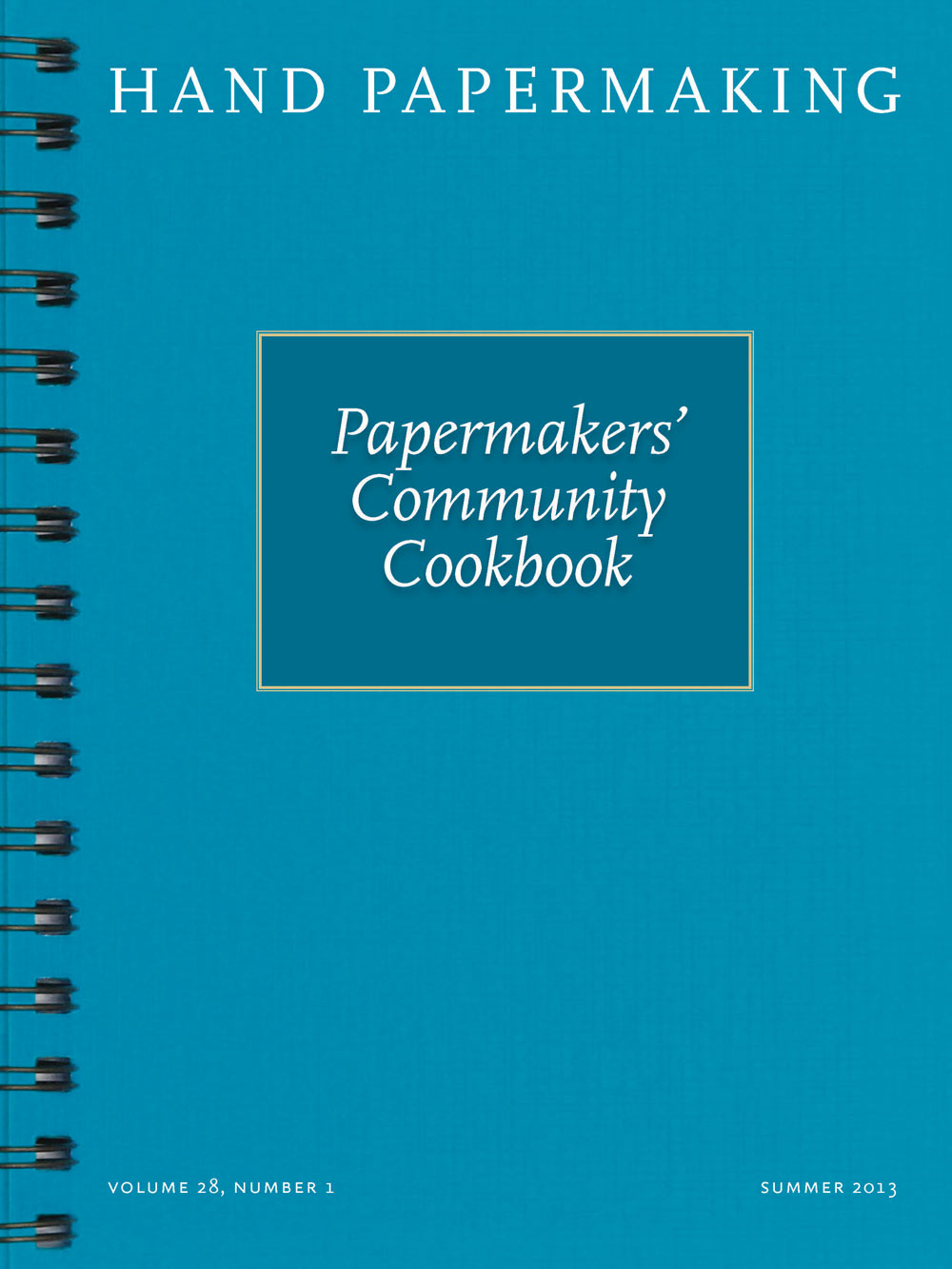
Summer 2013
:
Volume
28
, Number
1
Margaret Mahan codirects Peace Paper Project and Panty Pulping. She currently focuses on using the portable paper studio with survivors of sexual and domestic abuse. Mahan is a contributor to Hand Papermaking Newsletter. Drew Matott received his MFA in book and paper arts from Columbia College Chicago and his BFA in printmaking from the Buffalo State College. He cofounded the Green Door Studio, People's Republic of Paper, Combat Paper Project, BluSeed Paper Mill, Free Your Mind Press, and Peace Paper Project. The recipe for the portable papermaking studio includes a list of essential components, plus flexibility, creativity, and inspiration to continue practicing. Once the studio is liberated from a fixed place, it becomes more efficient, accessible, updated, universal, and above all visible.





